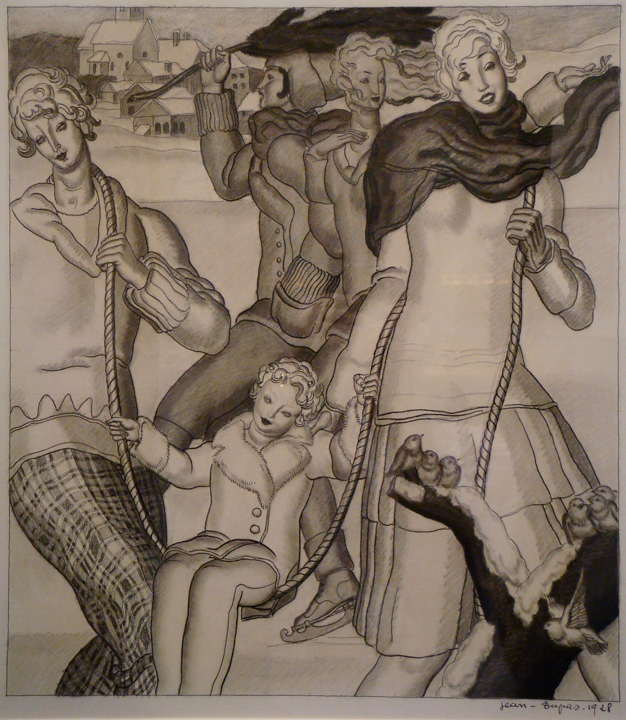

JEAN DUPAS
"L'HIVER"
DRAWING, SIGNED
FRANCE, DATED 1928
18 X 16 INCHES
Jean Dupas Jean Dupas was born in Bordeaux in 1882. He studied with Carolus-Duran and Albert Besnard at l’École des Beaux-Arts de Bordeaux. Dupas was awarded the prestigious Grand Prix de Rome in 1910. He exhibited at the Salon de la Société des Artistes Français and received several awards at the salon, including a Gold Medal in 1922. In 1925 Dupas finally received international fame when he was asked by Emile-Jacques Ruhlmann to decorate his pavilion at the Exposition Internationale des Arts Décoratifs et Industriels in Paris. He was awarded the Légion d’Honneur in 1926. Dupas worked as a ceramist with René Buthaud in the Sèvres porcelain factory in the early 1920’s, though Dupas’ interests soon turned to other art forms including poster design, painting under glass, tapestry, mosaics and lacquer. Dupas executed many works throughout France including a large composition called La Vigne et le Vin for the Bordeaux wines pavillion. He also painted several decorative panels including Les Parruches for the Hotel du Collectionneur and an allegorical image for the Palais de la Laine. In 1926 he worked with Ruhlmann and Janniot to design the interior of the tearoom for the Ile de France, the first ocean liner built after WWI. In 1928 Dupas painted a fresco for the Church of the Saint-Esprit in Paris. After this commission Dupas concentrated on poster design. He created numerous posters for stores in England and the United States. In 1935 Dupas created a large stained glass window for the main lounge of the steamship Normandy. This commission was an honor that confirmed his importance in the world of Art Deco. Additionally, in 1941 he was elected to the Académie des Beaux-Arts. Dupas’ mannerist style can be classified as neo-classical, typical of other Bordeaux modern artists. His works evoke the art of Ingres and Raphaël. With his portrayal of sophisticated women and allegorical fantasies, Dupas’ works convey the optimism, elegance, and decadence of the Art Deco style. As in the paintings of Delorme and Despujols, Dupas’s paintings also express utopian ideals and romance. |